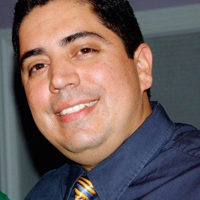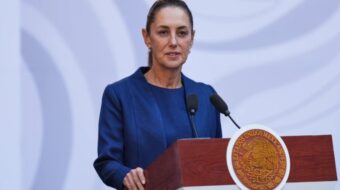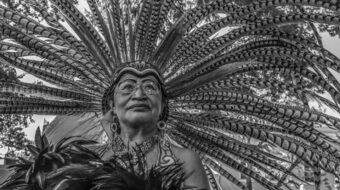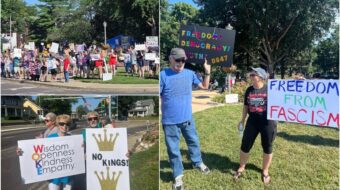The biggest national holiday in Mexico, and celebrated by Mexican people living all over the world, is Mexican Independence Day, Sept. 16.
A little history: Before Mexico became Mexico, indigenous people first cultivated and inhabited the land, creating civilizations such as the Olmec, the Teotihuacan, the Maya, the Toltecs, and the largest of them all, the Aztecs.
When the Spaniards landed in 1521 during their expeditions in search of riches, they encountered the great Aztec empire that ruled Central America. The Spanish captured the Aztec emperor Cuauhtemoc and destroyed the Aztec capital, Tenochtitlan. Three centuries of Spanish colonial rule began. The invaded territories were renamed Nueva España, New Spain.
The Spanish conquerors brought guns and germs that exterminated the majority of the indigenous population. There were approximately 20 million native people living in Central America before the conquest. One century later, only 1 million survived.
Spain imposed a caste hierarchy beginning with Spaniards born in Spain, who held the highest posts and were the wealthiest. Then came the criollos, those born in the colony to Spanish parents. Lower down were the mestizos, the mixed offspring of Spanish and indigenous people. The lowest were the indigenous people and African slaves.
In 1808, when France invaded Spain, the criollos in Nueva España began to seriously mobilize for independence. They were influenced by concepts of liberty, equality, and democracy put forth by the French Revolution and French philosophers Rousseau, Montesquieu, and Voltaire. They were also influenced by the American Revolution.
Freedom of speech, representative government, and restrictions on the power of the Catholic Church were major goals. They began to reject feudal Spanish values and seek to participate in the emerging world of commerce and industry.
One leader emerged. Today he is called the father of Mexico. Miguel Hidalgo was a priest from the Mexican town of Dolores who helped plan a revolt against Spain. The Spanish army found out and ordered his arrest. Before they could catch him, Hidalgo called a meeting where he rang his church bell on the eve of Sept. 16, 1810, calling his congregation to mass. Hidalgo gave a spirited speech and rallied people to rise up in arms and fight for independence. The battle cry, “Long live Mexico,” and “Long live Mexican independence,” became known as the Grito de Dolores, the Cry of Dolores.
Hidalgo sparked a growing movement for freedom from colonial rule. He was eventually captured and executed. Yet he is remembered as one of the most important leaders of Mexico’s independence. And after 11 years of war, the Mexican people finally won.
Celebrations usually begin on the eve of Independence Day, when massive crowds gather in the central squares (zócalos) of cities, towns, and villages across Mexico.
In Mexico City, thousands gather at the main zócalo which is decorated with flags, flowers, and hundreds of red, white, and green lights — the colors of Mexico. When the clock strikes 11 p.m. the crowd becomes silent. The Mexican president usually steps out on the palace balcony and rings a historic liberty bell in a re-enactment of Hidalgo’s famous call to the people. The president gives the Grito de Delores, shouting, “Viva Mexico” and “Viva la independencia,” and people all over the country celebrate.
Much like the Fourth of July in the United States, colorful parades are led by men and women in traditional Mexican dress, traditional music is played by mariachi bands, and dancing, food, and festive drinks are enjoyed throughout the week, which also includes bullfights, rodeos, and fireworks. Streets, buildings, and cars are decorated, and people make joyous sounds with noisemakers and whistles.
Of course, the Mexican people’s struggles are far from over. But this is a day for celebration.










